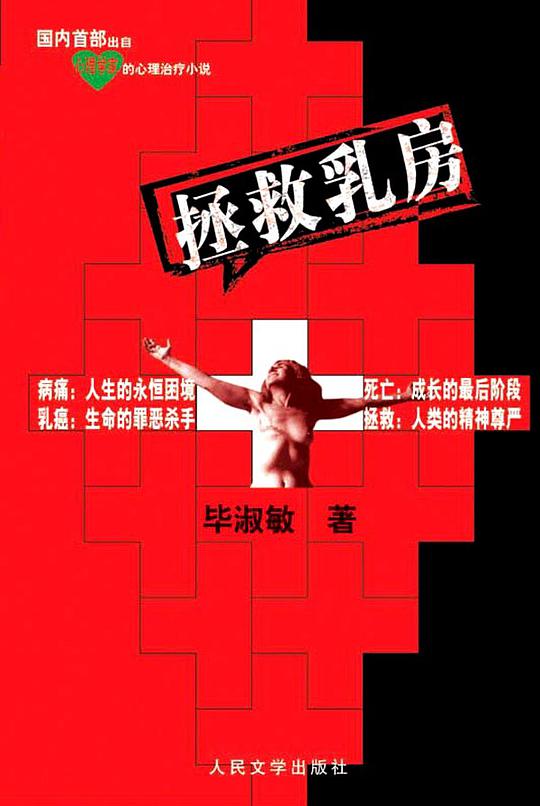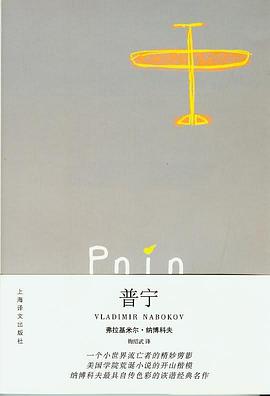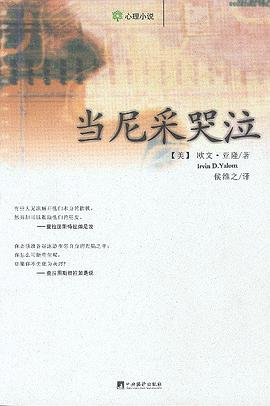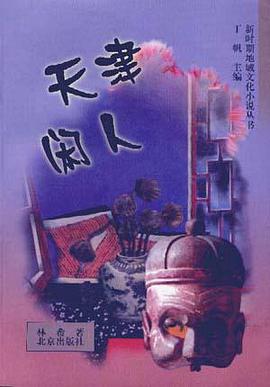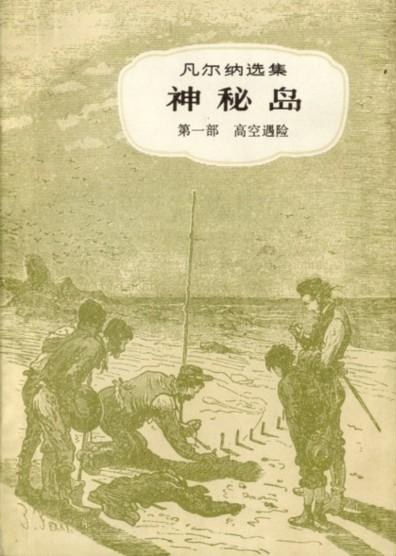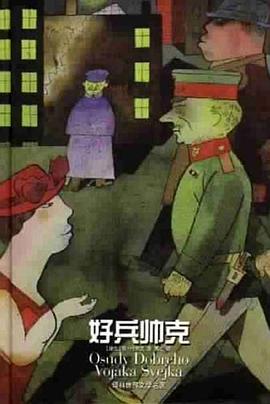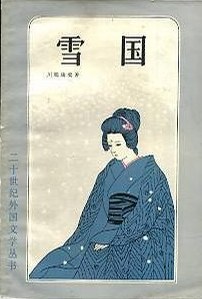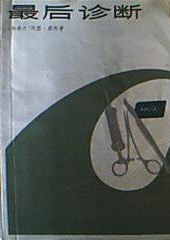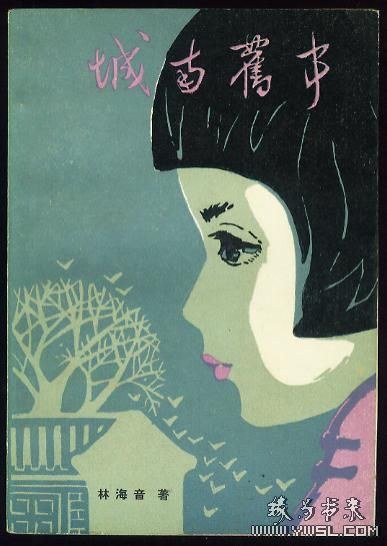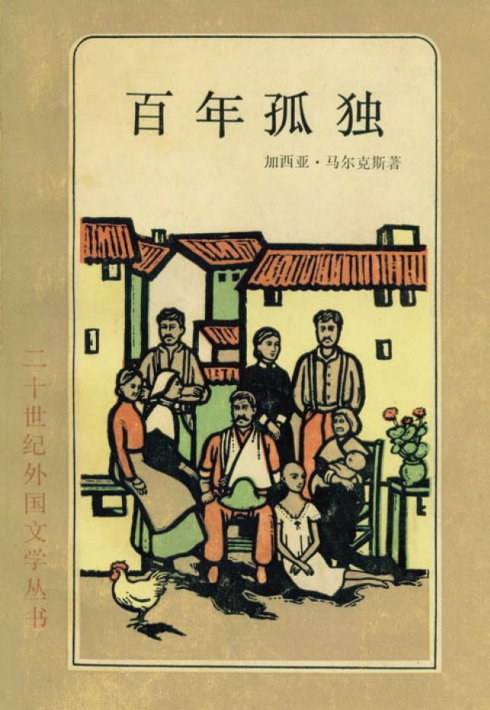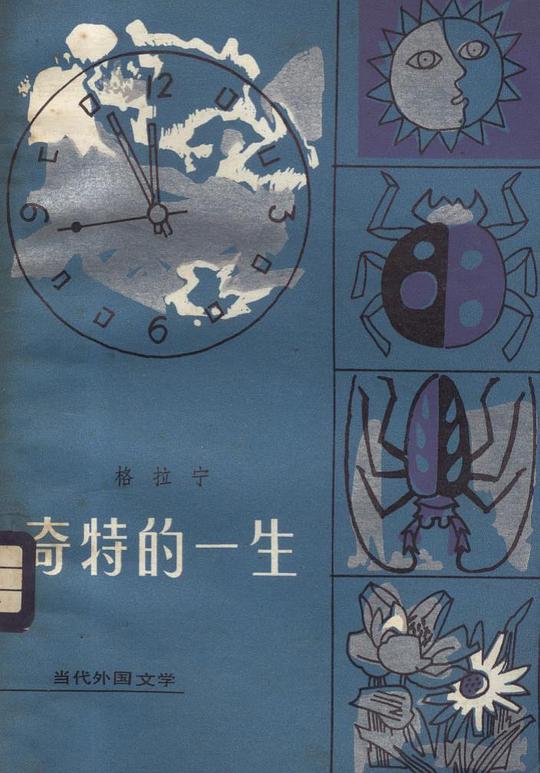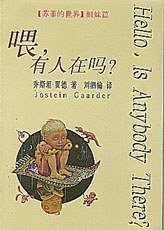小说
Fire in the Blood 豆瓣
作者:
Irene Nemirovsky
Knopf
2007
- 9
Here is a missing piece of the remarkable posthumous legacy of Irène Némirovsky, author of the internationally acclaimed Suite Française.
Written in 1941, the manuscript of Fire in the Blood was entrusted in pieces to family and a friend when the author was sent to her death at Auschwitz. The novel—only now assembled in its entirety—teems with the intertwined lives of an insular French village in the years before the war, when “peace” was less important as a political state than as a coveted personal condition: the untroubled pinnacle of happiness.
At the center of the tale is Silvio: in his younger years he fled the boredom of the village and made a life of travel and adventure. Now he’s returned, living in a farmer’s hovel in the middle of the woods, and, much to his family’s chagrin, perfectly content with his solitude.
But when he attends the wedding of his favorite young cousin—"she has the thing that, when I was young, I used to value most in women: she has fire"—Silvio begins to be drawn back into the complicated life of this small town. As his narration unfolds, we are given an intimate picture of the loves and infidelities, the scandals, the youthful ardor and regrets of age that tie Silvio to the long-guarded secrets of the past.
Némirovsky wrote with a crystalline understanding of the pretensions and protections of society, and of the varied workings of the human heart, in language as evocative of a vanished era as of the emotional and moral ambiguities in her characters’ lives. All of which was evident in Suite Française—and abundantly evident again in this powerful, passionate novel.
A Note on the Text
Until recently, only a partial text of Fire in the Blood was thought to exist, typed up by Irène Némirovsky’s husband, Michel Epstein, to whom she often passed her manuscripts for this purpose. However, Michel's typing breaks off at the words 'I felt so old' (see p. 37), leaving the novel unfinished.
Did Michel stop typing when Irène was arrested and deported to Auschwitz on 13 July 1942? Or perhaps even earlier in 1942, when she could no longer find a way to get her novels and short stories published? As readers will learn from the Preface to the French edition of this novel found at the back of the book, it is likely that Némirovsky was still working on Fire in the Blood in 1942. We know this thanks to the work of Olivier Philipponnat and Patrick Lienhardt, who were commissioned to write a biography of Némirovsky, and who began extensive research into her archive. Two pages of the original manuscript were found to have been in the suitcase that Némirovsky's daughter, Denise Epstein, carried with her from Issy-l'Évêque when she and her sister, Elisabeth, fled after their mother's arrest, and which contained Némirovsky’s great lost novel Suite Française. And as Philipponnat and Lienhardt trawled the Némirovsky archive at the Institut Mémoires de l'édition contemporaine (IMEC), they discovered, amidst papers given by Némirovsky for safe-keeping to her editor and family friend in the spring of 1942, the rest of the missing manuscript: thirty tightly packed pages of handwriting, with very few crossings out, the beginning of which corresponded to Michel’s typed version.
It is an extraordinary collection of papers, which adds to our understanding of Némirovsky’s oeuvre. As well as the manuscript of Fire in the Blood, it contains Némirovsky’s working notebooks dating back to 1933, successive versions of several of her novels including David Golder as well as outlines for Captivité, the projected third part of Suite Française.
Written in 1941, the manuscript of Fire in the Blood was entrusted in pieces to family and a friend when the author was sent to her death at Auschwitz. The novel—only now assembled in its entirety—teems with the intertwined lives of an insular French village in the years before the war, when “peace” was less important as a political state than as a coveted personal condition: the untroubled pinnacle of happiness.
At the center of the tale is Silvio: in his younger years he fled the boredom of the village and made a life of travel and adventure. Now he’s returned, living in a farmer’s hovel in the middle of the woods, and, much to his family’s chagrin, perfectly content with his solitude.
But when he attends the wedding of his favorite young cousin—"she has the thing that, when I was young, I used to value most in women: she has fire"—Silvio begins to be drawn back into the complicated life of this small town. As his narration unfolds, we are given an intimate picture of the loves and infidelities, the scandals, the youthful ardor and regrets of age that tie Silvio to the long-guarded secrets of the past.
Némirovsky wrote with a crystalline understanding of the pretensions and protections of society, and of the varied workings of the human heart, in language as evocative of a vanished era as of the emotional and moral ambiguities in her characters’ lives. All of which was evident in Suite Française—and abundantly evident again in this powerful, passionate novel.
A Note on the Text
Until recently, only a partial text of Fire in the Blood was thought to exist, typed up by Irène Némirovsky’s husband, Michel Epstein, to whom she often passed her manuscripts for this purpose. However, Michel's typing breaks off at the words 'I felt so old' (see p. 37), leaving the novel unfinished.
Did Michel stop typing when Irène was arrested and deported to Auschwitz on 13 July 1942? Or perhaps even earlier in 1942, when she could no longer find a way to get her novels and short stories published? As readers will learn from the Preface to the French edition of this novel found at the back of the book, it is likely that Némirovsky was still working on Fire in the Blood in 1942. We know this thanks to the work of Olivier Philipponnat and Patrick Lienhardt, who were commissioned to write a biography of Némirovsky, and who began extensive research into her archive. Two pages of the original manuscript were found to have been in the suitcase that Némirovsky's daughter, Denise Epstein, carried with her from Issy-l'Évêque when she and her sister, Elisabeth, fled after their mother's arrest, and which contained Némirovsky’s great lost novel Suite Française. And as Philipponnat and Lienhardt trawled the Némirovsky archive at the Institut Mémoires de l'édition contemporaine (IMEC), they discovered, amidst papers given by Némirovsky for safe-keeping to her editor and family friend in the spring of 1942, the rest of the missing manuscript: thirty tightly packed pages of handwriting, with very few crossings out, the beginning of which corresponded to Michel’s typed version.
It is an extraordinary collection of papers, which adds to our understanding of Némirovsky’s oeuvre. As well as the manuscript of Fire in the Blood, it contains Némirovsky’s working notebooks dating back to 1933, successive versions of several of her novels including David Golder as well as outlines for Captivité, the projected third part of Suite Française.
金色笔记 豆瓣
8.7 (14 个评分)
作者:
(英)多丽丝﹒莱辛
译者:
陈才宇
/
刘新民
译林出版社
2000
- 8
作者把五本笔记穿插在这个故事之中,以此描写二十世纪中期整个世界的风貌。其中黑色笔记描写主人公作为作家在非洲的经历,涉及殖民主义和种族主义问题;红色笔记写她的政治生活,记录她对斯大林主义由憧憬到幻灭的思想过程,黄色笔记是作者根据自己的爱情生活所创作的一个故事,题为《第三者的影子》;蓝色笔记是她的日记,记录了主人公精神的轨迹。四本笔记于是成为一个不安宁的灵魂的四道反光。而最后的金色笔记,却是作者对人生的一种哲理性总结。在这种貌似无序的结构中,作者展示了那个混乱迷惘而多变的时代中一个失重的灵魂的探索和生存。
当尼采哭泣 豆瓣
9.0 (8 个评分)
作者:
[美国] 欧文·亚隆 Irvin D·Yalom
译者:
侯维之
中央编译出版社
2003
- 4
关于《当尼采哭泣》这本小说,从情节来看,是一篇高潮迭起的心理推理小说。作者假托19世纪末的两位大师:存在主义大师尼采和医学大师布雷尔,透过史料和名著中呈现的真实有中国历史、思维观念和人格特质,将两人连结成医生与病人,开启一段扣人心弦的“谈话治疗”。故事开始于身陷对病人肉欲幻想而无法自拔的名医布雷尔,在关于撩拨男性的路・莎乐美的引诱下,试图诱饵劝服尼采接受治疗,却面临自己的“绝望”,于是历经一场不知谁是病人、谁是医生的心理治疗,在治疗可能随时胎死腹中的情形下,经过几许峰回路转,面临高处不胜寒的疑虑,最后两人以出科意料的方式,得以超越自己的人生困境。
塞莱斯廷预言Ⅱ第十种洞察力 豆瓣
作者:
James Redfield
译者:
李松梅
昆仑出版社
1998
秘鲁发现了一部古老的手稿,夏琳突然失踪,于是,令人激动、智慧的阿帕拉契山古老神秘的密林中的探寻开始了。当获知第十种洞察力后,您会发现自己能够回答以前从未回答、也无人向您提起过的问题了。
作者用第一人称的叙述手法,把往事与现实交织在一起,把个人的思想感情于周围人物的思想感情沟通融化。强调人的原始本能,并将恐惧心理作为压抑和扭曲天性的因素加以摒弃,主张让本能得到充分的发挥,以达到天性之完美。
书中所表达的激情、谅解和毅力,会使您的生活充满活力,会改变您的人生态度,或许,也会改变整个世界。
作者用第一人称的叙述手法,把往事与现实交织在一起,把个人的思想感情于周围人物的思想感情沟通融化。强调人的原始本能,并将恐惧心理作为压抑和扭曲天性的因素加以摒弃,主张让本能得到充分的发挥,以达到天性之完美。
书中所表达的激情、谅解和毅力,会使您的生活充满活力,会改变您的人生态度,或许,也会改变整个世界。
神秘岛(全三册) 豆瓣
9.2 (19 个评分)
作者:
[法] 儒勒·凡尔纳
译者:
联星
中国青年出版社
1979
《神秘岛》是法国著名科幻小说家儒尔·凡尔纳的三部曲之一,该书叙述美国南北战争期间,五名北军俘虏乘坐气球,从南军大本营里士满出逃。途中遭遇风暴,被抛到南太平滚一个荒无人烟的小岛上。这些落难者依靠自己的智慧和过人的毅力,克服了种种困难,不仅顽强地生存下来,而且还把小岛建设成一个繁荣富 庶的乐园。整部小说情节跌宕起伏,充满了对奇异多姿的自然界的描写,并且把各种知识融会到惊心动魄的故事之中,因此出版至今虽然已有一百多年,但仍探受世界各地读者的推崇和喜爱。
《神秘岛》中的主要人物共有五个,作者对他们并没有很多的正面描写,但是随着故事的展开和情节的深入,这些人物的性各被栩栩如生地展现在读者眼前:智慧冷静、坚毅果敢的工程师塞勒斯·史密斯,知识渊博、文武双全的记者吉丁·史佩莱,心直口快、勇敢善良的水手潘克洛夫,聪明伶俐、勤奋好学的少年赫伯特·布朗,忠心耿耿、心灵手巧的黑人纳布,此外还有改邪归正、忘我恭谦的罪犯艾尔通。
《神秘岛》中的主要人物共有五个,作者对他们并没有很多的正面描写,但是随着故事的展开和情节的深入,这些人物的性各被栩栩如生地展现在读者眼前:智慧冷静、坚毅果敢的工程师塞勒斯·史密斯,知识渊博、文武双全的记者吉丁·史佩莱,心直口快、勇敢善良的水手潘克洛夫,聪明伶俐、勤奋好学的少年赫伯特·布朗,忠心耿耿、心灵手巧的黑人纳布,此外还有改邪归正、忘我恭谦的罪犯艾尔通。
城南旧事 豆瓣
9.2 (12 个评分)
作者:
林海音
北京出版社
1984
“长亭外,古道边,芳草碧连天。问君此去几时来,来时莫徘徊!
天之涯,地之角,知交半冷落,人生难得是欢聚,唯有别离多。”
这是林海音小说《城南旧事》中的一首骊歌,曾在小说中反复出现,可说是《城南旧事》的主题歌、主旋律,概括了作品描写离愁的内容,使作品散发出一股淡淡的哀愁之味。
林海音在后记中说:“读者有没有注意,每一段故事的结尾,里面的主角都离我而去,一直到最后一篇的《爸爸的花儿落了》,亲爱的爸爸也去了,我的童年也结束了。”他这番话,准确地概括了《城南旧事》表现“离愁”的重要特点。
《城南旧事》没有正面描写旧时代中国的黑暗势力,林海音只是描写了自己少年时代所见所闻的5个生活小故事和几个悲剧人物,但通过这5个悲剧故事及其背景的描写,却真实地反映了二、三十年代贫穷、苍凉的旧中国面貌和当时社会的黑暗和令人窒息的气氛。“童心无欺”,以小女孩英子的眼睛来观察社会,不禁让人感到更加真实。
林海音的《城南旧事》在艺术表现上主要采用中国文学传统的白描手法,很少静止的去描写人物的复杂心理和自然风景,而主要通过人物的言语和行动的简洁勾勒去刻画人物的性格和作品的主题。
天之涯,地之角,知交半冷落,人生难得是欢聚,唯有别离多。”
这是林海音小说《城南旧事》中的一首骊歌,曾在小说中反复出现,可说是《城南旧事》的主题歌、主旋律,概括了作品描写离愁的内容,使作品散发出一股淡淡的哀愁之味。
林海音在后记中说:“读者有没有注意,每一段故事的结尾,里面的主角都离我而去,一直到最后一篇的《爸爸的花儿落了》,亲爱的爸爸也去了,我的童年也结束了。”他这番话,准确地概括了《城南旧事》表现“离愁”的重要特点。
《城南旧事》没有正面描写旧时代中国的黑暗势力,林海音只是描写了自己少年时代所见所闻的5个生活小故事和几个悲剧人物,但通过这5个悲剧故事及其背景的描写,却真实地反映了二、三十年代贫穷、苍凉的旧中国面貌和当时社会的黑暗和令人窒息的气氛。“童心无欺”,以小女孩英子的眼睛来观察社会,不禁让人感到更加真实。
林海音的《城南旧事》在艺术表现上主要采用中国文学传统的白描手法,很少静止的去描写人物的复杂心理和自然风景,而主要通过人物的言语和行动的简洁勾勒去刻画人物的性格和作品的主题。
奇特的一生 豆瓣
8.0 (22 个评分)
作者:
[俄] 格拉宁
译者:
侯焕闳
/
唐其慈
外国文学出版社
1979
- 8
柳比歇夫的治学,博大精深,既是一个狭隘领域的专家,又是个杂家。他的知识面究竟有多广,是很难测度的。
我不打算通俗地阐述他的思想或衡量他的贡献。我感兴趣的是另一个问题:他,我们同时代的人,一生干了那么多事,产生了那么多思想,这是用什么方法达到的?最后几十年(他是 82 岁时死的),他的工作精力和思维效率有增无减。 关键不是在数量上, 而在他是怎么样,用什么方法做到的。柳比歇夫对我最有吸引力的精粹、核心正是这个方法。他的工作方法是一个创举,不问他其余的工作和研究如何,这种工作方法是独立存在的。
从表面上看, 这是纯技术性的工作方法, 一点也不起眼。它是自然而然形成的,但几十年来它取得了精神上的力量。 它成为柳比歇夫生活的骨架。不仅保证了最高的效率,并且保证了最旺盛的生命力。
我不打算通俗地阐述他的思想或衡量他的贡献。我感兴趣的是另一个问题:他,我们同时代的人,一生干了那么多事,产生了那么多思想,这是用什么方法达到的?最后几十年(他是 82 岁时死的),他的工作精力和思维效率有增无减。 关键不是在数量上, 而在他是怎么样,用什么方法做到的。柳比歇夫对我最有吸引力的精粹、核心正是这个方法。他的工作方法是一个创举,不问他其余的工作和研究如何,这种工作方法是独立存在的。
从表面上看, 这是纯技术性的工作方法, 一点也不起眼。它是自然而然形成的,但几十年来它取得了精神上的力量。 它成为柳比歇夫生活的骨架。不仅保证了最高的效率,并且保证了最旺盛的生命力。
原始人类 豆瓣
Hominids
作者:
(加拿大)罗伯特·J·索耶
译者:
叶林
四川科学技术出版社
2008
曾有一种人类与我们的祖先智人共存在这个世界上,他们是进化谱系中与我们关系最亲密的兄弟手足。
他们是尼安德特人。他们会使用火,能制造工具,并且懂得艺术。但在两万多年前,他们的进化链突然中断,有人猜测,是我们祖先的入侵导致了他们的灭绝。
但如果这个曾经繁盛一时的人种逃过了劫难,世界将会怎样?
他们矮小敦实的身体比我们更强壮,他们的脑容量等同于甚至超过我们,他们极有可能最终进化出另一种崭新的文明。
某天,地底深处的加拿大萨德伯里中微子天文台,一个尼安德特人神秘地出现在重水槽中,一扇沟通我们宇宙与尼安德特宇宙的窗口自此打开……
本书系“尼安德特”三部曲的首部,2002年在美国著名的科幻杂志《类比》上连载,并获得2003年雨果奖最佳长篇奖。
他们是尼安德特人。他们会使用火,能制造工具,并且懂得艺术。但在两万多年前,他们的进化链突然中断,有人猜测,是我们祖先的入侵导致了他们的灭绝。
但如果这个曾经繁盛一时的人种逃过了劫难,世界将会怎样?
他们矮小敦实的身体比我们更强壮,他们的脑容量等同于甚至超过我们,他们极有可能最终进化出另一种崭新的文明。
某天,地底深处的加拿大萨德伯里中微子天文台,一个尼安德特人神秘地出现在重水槽中,一扇沟通我们宇宙与尼安德特宇宙的窗口自此打开……
本书系“尼安德特”三部曲的首部,2002年在美国著名的科幻杂志《类比》上连载,并获得2003年雨果奖最佳长篇奖。
喂,有人在吗? 豆瓣
Hallo? Er det noen her?
作者:
[挪威] 乔斯坦·贾德
译者:
刘泗翰
作家出版社
2000
- 9
一艘太空船穿越广袤的银河,向着一颗蓝蓝绿绿的星球一地球前进。来自艾尔乔星的男孩米加打开舱门,对着夜空大喊:“喂,有人在吗?”《喂,有人在吗?》是乔斯坦.贾德继《苏菲的世界》、〈纸牌的秘密〉之后推出的最新力作。故事场景从西方哲学的原乡欧洲大陆延展至无垠的外达空,叙述小男孩乔金和外星人米加的第三类接触奇遇。〈苏菲的世界〉提出了“你是谁?”、“世界从哪里来?”等问题:〈喂,有人在吗?〉问的是“我们是谁?”、“我们从哪里来”? 可以说是一本“小苏菲”。作者透过深入浅出的童话形式,让奇遇之谜和哲学主题不断地碰撞,穿透梦境和现实,极具梦幻写实趣味,也展现出一个至为恢宏的地球观和宇宙观。
